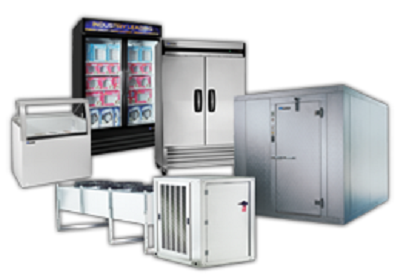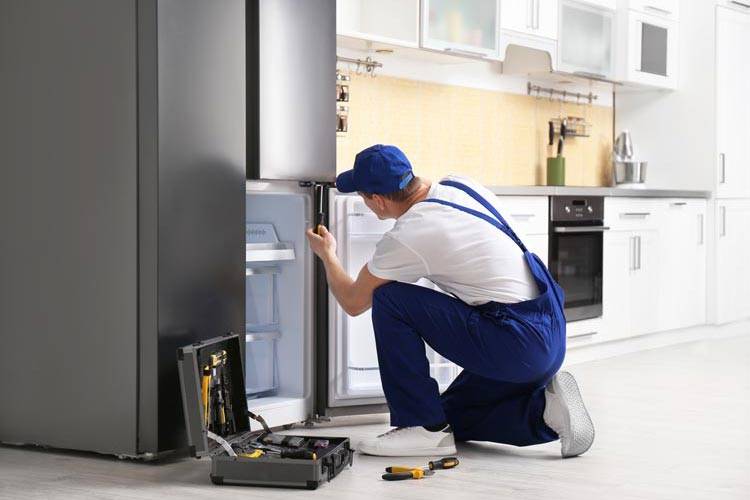The Ultimate Guide to Do It Yourself Device Fixing Methods
From fridges to dishwashers, understanding just how to repair and repair these devices can conserve you time and cash. Are you prepared to find essential techniques that will empower you to take care of repairs with confidence?
Recognizing Typical Appliance Troubles
When you rely on your home devices, it can be annoying when they suddenly stop functioning or act up. Recognizing typical appliance issues can aid you fix concerns successfully.
If your oven isn't home heating, damaged components or thermostat concerns could be to blame. Dish washers usually experience problems with water drainage, so ensure the filter is clean and the drain hose pipe isn't kinked.
Additionally, pay attention for unusual noises; they commonly show mechanical issues. By recognizing these signs, you can save time and potentially avoid costly repair services. A little understanding goes a long means in keeping your home appliances, so stay informed to keep every little thing running smoothly.
Crucial Devices for DIY Repair Works
Before diving right into do it yourself appliance fixings, it is necessary to collect the right devices to ensure the procedure goes efficiently. Begin with a great collection of screwdrivers, including both flathead and Phillips, as they're essential for opening most appliances. You'll additionally desire a pair of pliers for clutching and twisting cords or small elements.
Don't fail to remember a multimeter; it aids you test electrical elements and detect concerns effectively. An outlet set comes in handy for loosening up or tightening up bolts, while an utility knife can be beneficial for opening or reducing cords product packaging.
Ultimately, consider having a flashlight accessible to illuminate dark areas inside your appliances. With these crucial tools, you'll be fully equipped to tackle numerous repair services, saving both money and time. Gather your gear and get all set to roll up your sleeves!
Safety And Security First: Preventative Measures to Take
Before you start any appliance repair service, it's important to focus on safety and security. Ensure you wear personal protective devices, separate the power source, and maintain your workspace organized. These simple preventative measures can assist avoid accidents and ensure a smoother repair process.

Personal Protective Equipment
Safety and security gear is an important part of any type of do it yourself home appliance repair project. You must constantly use safety goggles to protect your eyes from dust and particles. A tough set of handwear covers will certainly secure your hands from harmful materials and sharp edges. Take into consideration making use of a mask if you're managing chemicals or dirt, guaranteeing you breathe safely while functioning. Steel-toed boots are also a smart choice, particularly when lifting heavy devices. Don't fail to remember to use long sleeves and trousers to safeguard your skin from possible injuries. By prioritizing individual safety devices, you'll substantially reduce the threat of mishaps and injuries. Bear in mind, being prepared with the best equipment keeps you risk-free and concentrated on finishing your repair work effectively.
Power Resource Disconnection
To guarantee a safe DIY home appliance repair work, separating the power resource is essential. Before you begin any work, you must unplug the home appliance or transform off the breaker. This basic step stops electrical shocks and warranties that you can concentrate on the repair service without stressing over accidental activation. Always confirm that the device is off by examining it with a voltage tester. If you're handling larger devices, like a washing machine or clothes dryer, see to it to safeguard the power cable and stay clear of any kind of contact with water. Bear in mind, security initially! As soon as you're confident that the power is separated, you can with confidence continue with your fixings, understanding you've taken the essential preventative measures to secure on your own.
Workspace Organization
An efficient work location can make all the difference in your DIY device fixing job. Start by clearing your work space of clutter to protect against crashes and diversions. A clean area not just increases performance but also maintains you secure while you function on your home appliance repair.
Step-by-Step Guide for Refrigerator Repairs
When your fridge begins acting up, it can be aggravating, but dealing with the trouble yourself can save you money and time. Disconnect the refrigerator to guarantee security. Look for common problems like temperature changes or unusual noises. If it's not cooling, examine the thermostat setups; they could be set too expensive. Next off, tidy the condenser coils, which usually gather dirt Discover More Here and debris. For a noisy fridge, examine the follower and validate it's not obstructed.
If there's water merging within, inspect the door seals for damage or dust, and tidy them if needed. For ice build-up, clear the defrost drain. When you have actually attended to the concern, plug the refrigerator back in and check it for a few hours. If the trouble lingers, you may require to change a damaged component, like the compressor or fan electric motor. Bear in mind, don't hesitate to consult the fix refrigerator near me handbook or look for specialist aid if required.
Fixing Cleaning Maker Problems
Just like refrigerators, cleaning devices can present their own collection of challenges, yet many issues can be solved with a bit of troubleshooting. If your machine won't begin, examine the power cable and confirm it's connected in.
If your clothes aren't obtaining clean, think about the water degree and detergent type; using also much detergent can develop excess suds, influencing performance. For leaks, check out the hoses for fractures or loose connections. Tightening these can commonly fix the problem. Routine upkeep, like cleaning the filter, can stop several concerns from developing. Keep in mind, a little troubleshooting goes a long way in keeping your cleaning maker running smoothly.
Troubleshooting Stoves and Stoves
Just how can you troubleshoot common issues with your oven or stove? Begin by checking the power supply. Make sure it's plugged in and the breaker is not tripped. If it's a gas range, confirm the gas valve is open. Next, examination the burners: if they do not spark, clean the igniter and check for blockages in the heater ports.
If your oven isn't home heating, check the temperature level setups and confirm the door seals tightly. If it's harmed., a damaged heating aspect can additionally be the wrongdoer; you could need to replace it.
For uneven food preparation, rotate your frying pans and take into consideration utilizing a stove thermometer to confirm exact temperatures. Ultimately, if you listen to unusual noises or scent gas, shut off the appliance promptly and consult a specialist. By adhering to these actions, you can recognize and deal with lots of typical stove and oven problems successfully.
Fixing Dishwashers Made Easy
When your dishwashing machine begins breaking down, it can be irritating, yet resolving usual concerns isn't as difficult as it seems. You'll learn step-by-step troubleshooting approaches that will certainly assist you identify the problem, together with the important tools you'll require to deal with fixings yourself. Let's make repairing your dish washer a wind!
Common Dishwasher Issues
While dish washers are made to make your life easier, they can in some cases run into common issues that leave you feeling discouraged. If your dishwasher's door won't latch, it check that can be a straightforward problem with the latch system or door seal. Resolving these concerns early can save you time and inconvenience down the road.

Detailed Troubleshooting
Before diving into fixings, it's essential to identify the specific problem your dish washer is encountering. Start by examining if it's unclean correctly. Check the spray arms for obstructions and guarantee they spin freely. Check out door seals and pipes for any type of damage if it's leaking. For odd sounds, pay attention closely during cycles; international things could be embeded the filter or impeller. If your dishwasher won't begin, check the power supply and door lock. Do not forget to consult your user guidebook for fixing tips certain to your design. By methodically dealing with each possible concern, you can pinpoint the trouble and take the needed actions to fix it, making your dishwashing machine function fresh once again.
Vital Repair Tools
When fixing your dish washer,Having the right devices at your disposal can make all the distinction. Beginning with a screwdriver collection, as you'll usually need both Phillips and flathead alternatives. A multimeter's important for identifying electric concerns, while pliers can assist you grip and adjust various components. Do not forget a bucket or towels for any kind of water splashes during repair services.
If you're tackling clogs, a drain snake or a wet/dry vacuum will certainly be invaluable. You might additionally desire a degree to ensure your dish washer's effectively lined up. Security gear like safety glasses and gloves will certainly shield you while you function. With these vital tools, you'll be well-equipped to tackle any kind of dishwasher repair challenge that comes your way.
Regularly Asked Concerns
How Do I Figure out if a Home Appliance Deserves Repairing?
To determine if an appliance's worth fixing, consider its age, repair expenses, and existing value. If repair services go beyond half the replacement price, you could wish to purchase a brand-new version instead.
Can I Locate Substitute Components Locally for My Home Appliance?
Yes, you can usually discover replacement components locally for your device. Examine equipment shops, appliance repair work shops, or neighborhood classifieds. Do not forget to bring the model number to assure you obtain the correct part!
When Repairing Home Appliances?, what Common Mistakes Should I Prevent.
When repairing home appliances, avoid hurrying via diagnostics, overlooking security precautions, or utilizing inaccurate tools. Don't miss reviewing handbooks or enjoying tutorials; they offer essential assistance. Hold your horses and comprehensive to ensure successful repairs and protect against additional damage.
How Long Does a Regular DIY Appliance Repair Work Take?
A regular do it yourself home appliance repair usually takes one to 3 hours, depending upon the complexity. You'll intend to collect your products and devices first, and adhere to directions meticulously to avoid unnecessary hold-ups.
Exist Any Type Of Warranties for Do It Yourself Home Appliance Repair Works?
When you deal with DIY device fixings, guarantees typically do not cover your work. Some suppliers could honor service warranties for parts you change. Constantly check your device's service warranty terms prior to beginning any repairs to avoid issues.
Before diving into DIY appliance fixings, it's essential to collect the right devices to ensure the process goes efficiently.Before you start any type of home appliance fixing, it's important to focus on security.To assure a safe Do it yourself appliance fixing, separating the power resource is essential.A well-organized job location can make all the difference in your DIY appliance repair service project. Constantly examine your device's service warranty terms prior to beginning any kind of fixings to stay clear of issues.